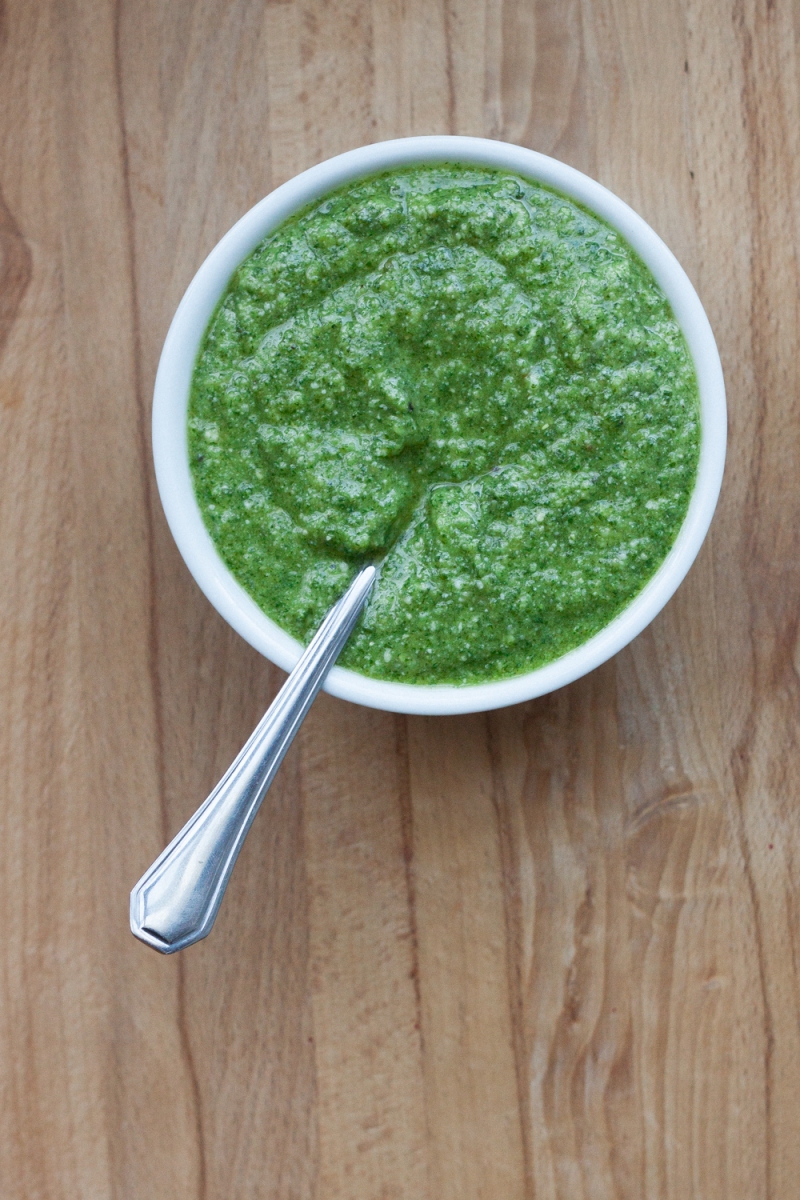
NOTE: An updated version of this recipe appears in my cookbook, The Ancestral Table.
Pesto has an interesting history. Its name comes from a Genoese (Northern Italy) word that means to crush or pound, implying the use of mortar and pestle. In fact, the English word “pestle” has the same root. While pastes have been used in Italy since the Ancient Roman times, basil wasn’t introduced until later, from Africa (via India), and the modern interpretation of basil pesto dates back only to the 19th century. In fact, pesto didn’t even gain popularity in the United States until the latter half of the 20th century.
Basil pesto is great because it is a fool-proof way to spice up many pasta dish, or even sautéed vegetables. I often add a spoonful of it to many sauces, including alfredo or spaghetti sauce (blasphemy, right?) for a subtle extra kick.

You’ll Need:
2 cups fresh basil leaves
1/2 cup aged Parmigiano-Reggiano or Pecorino Pepato cheese, grated
1/3 cup extra virgin olive oil
1/3 cup pine nutes
4 cloves garlic
While those two cheeses above may sound intimidating, they’re not; you should be able to find both of them at many local grocery stores. Parmigiano-Reggiano is just a fancy term for Parmesan cheese, although the use of that specific name means that the cheese comes from that area of Italy, and is most likely made with raw milk. Pecorino Pepato in its aged form has a similar taste and granular texture as Parmesan cheese, but is made with sheep’s milk.

One trick to making pesto is to do it in a certain order. First step – blend your basil and pine nuts. I prefer to use my Ninja for jobs like this because it behaves a lot like a food processor but also does a good job blending as well. Either way, a blender or a food processor should work just fine.

Next, add the garlic and blend. Finally, add the olive oil and cheese and blend one last time.

That’s it! This pesto should last a few weeks in the fridge.

I make mine the same way, but I like to add avocado, so it turns out super creamy and thick. The only downside then is that it likes to turn brown after a day…it looks awful, but still tastes awesome!
LikeLike
Mmmm, I love basil…and garlic…and parmesan…and the colour green…and also your photography!
LikeLike
Keep the avocado seeds in it when you pop it in the fridge and they will stop it from going brown.
LikeLike
Pesto pasta is my favourite, I use to make some and freeze so is always handy, lovely recipe:)
LikeLike
I’ve been wanting to try my hand at pesto – this looks like a tasty (and easy!) recipe. Thanks!
LikeLike
Pesto and “pestle” have the same root, cool food history fact! I will definitely mention this next time I serve up some pesto! Nice recipe. Cheers, :)
LikeLike
Thanks, Anna!
LikeLike
Made this at the weekend and it was great! Although I must say the taste was a lot better after leaving the pesto in the fridge to ‘mature’ for a few days… I think it just took the edge off the raw garlic which I may have gone a little overboard with!
LikeLike